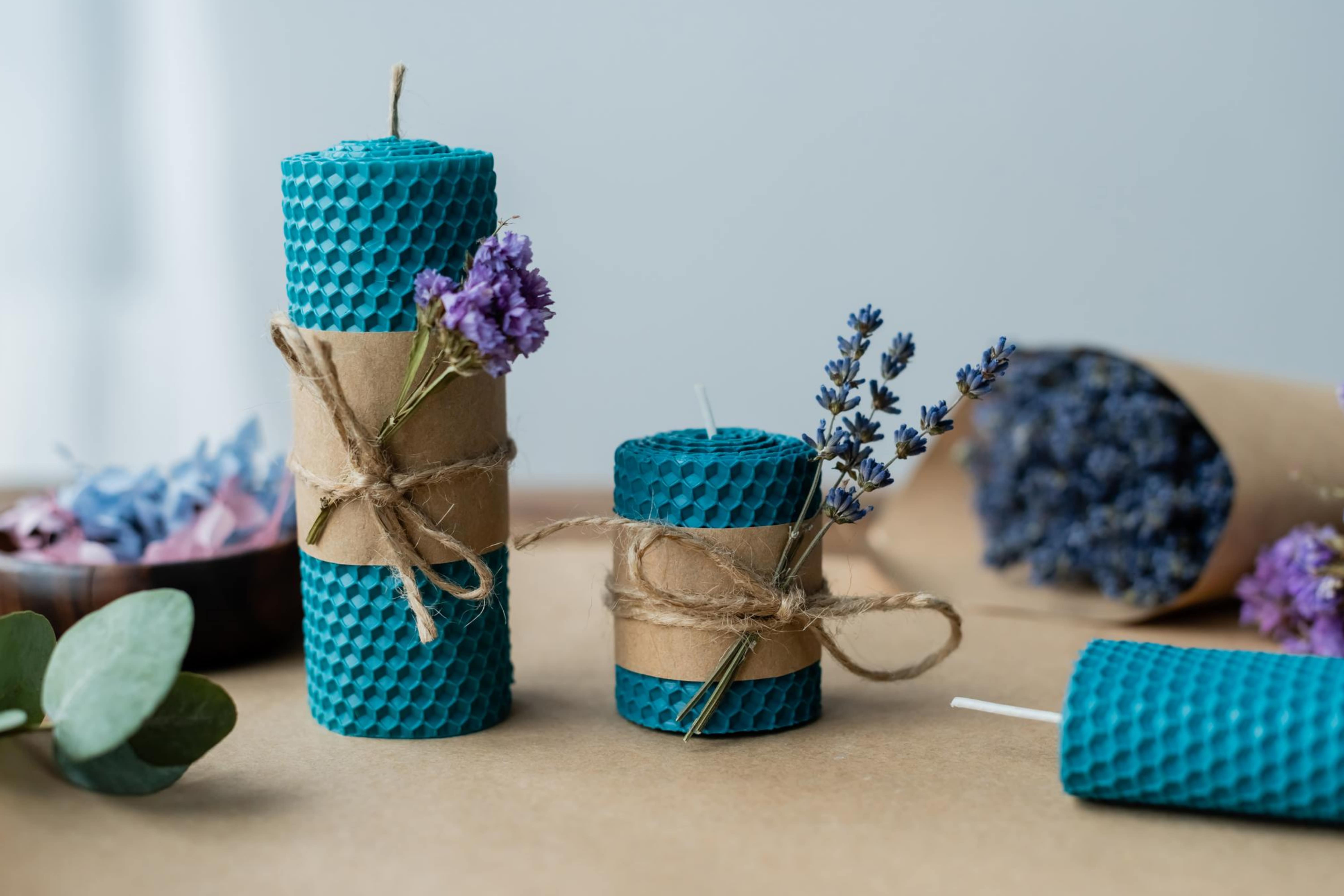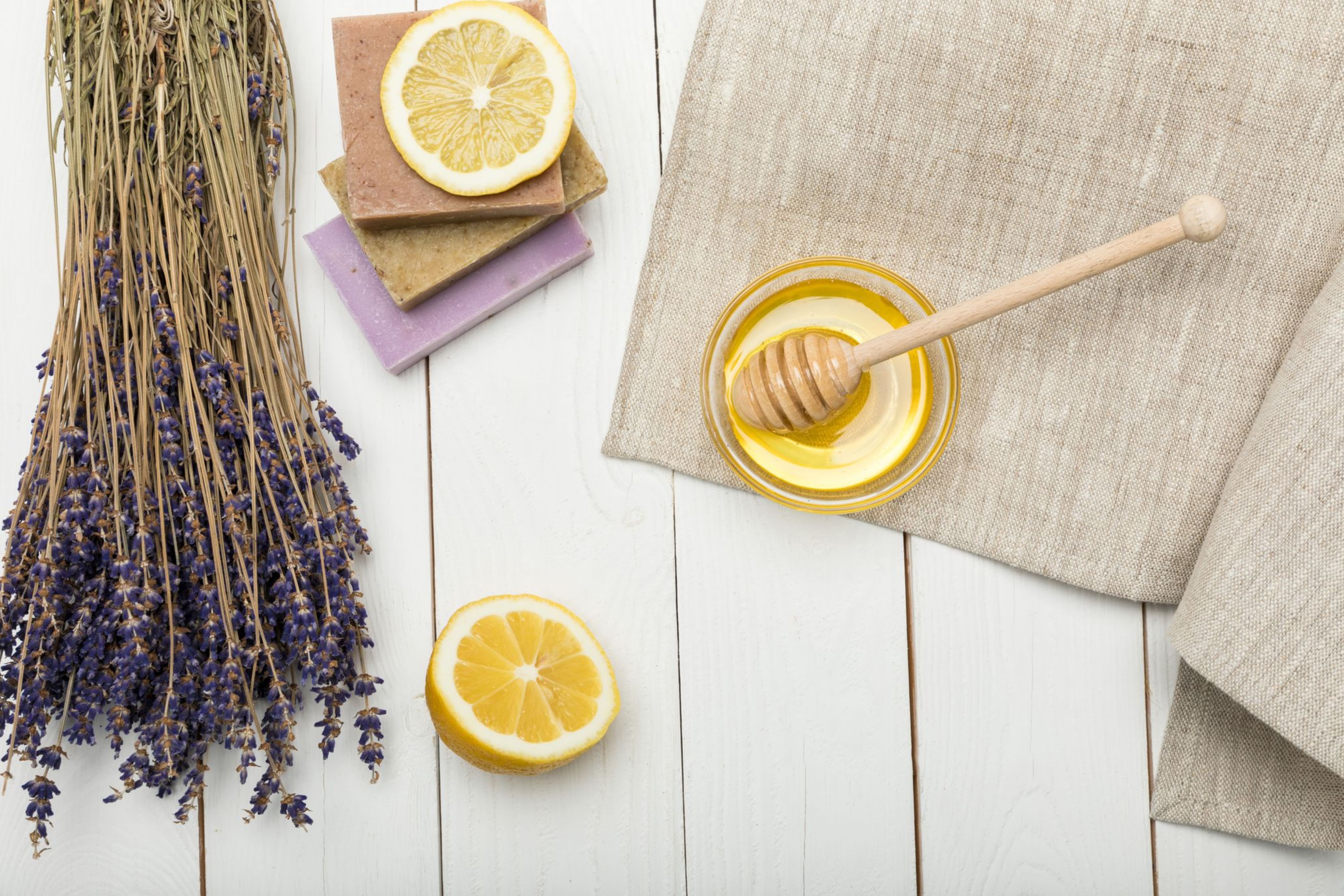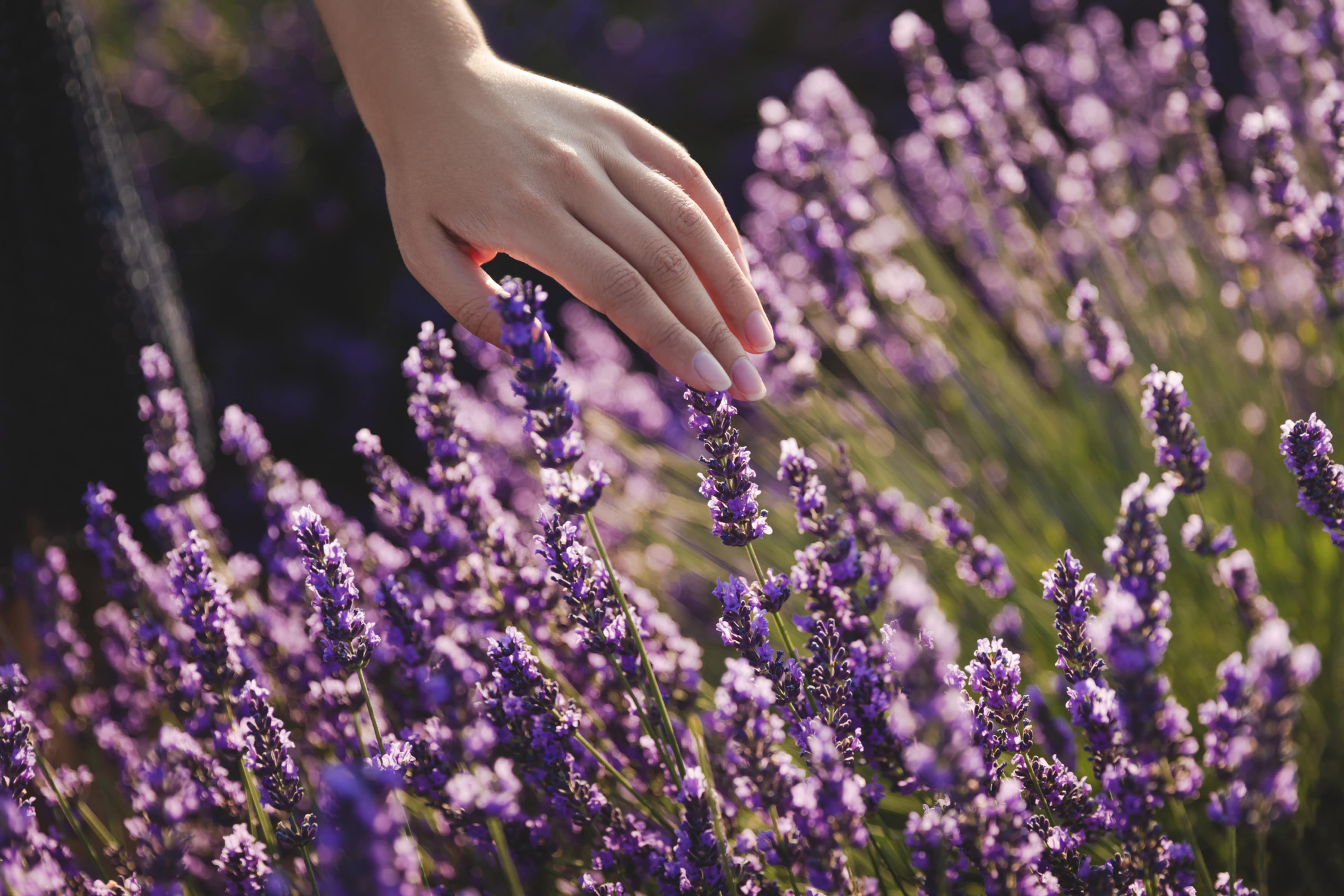Lavender has been celebrated for centuries for its alluring fragrance, beauty, and vast range of medicinal and therapeutic properties. But while its blooms often steal the spotlight, its leaves hold incredible potential, too, often overshadowed.
In this article, we’ll embark on an aromatic journey, exploring ten captivating ways to use those often-forgotten lavender leaves. Ready to get inspired?
As someone who delves deep into the plant world, I’ve been pleasantly surprised by the myriad of uses lavender leaves offer. Let’s dive into these creative ideas and turn those green treasures into something truly exceptional.
1. Herbal Teas
If you’ve enjoyed the gentle calm of lavender-infused teas, why not switch it up a bit? Using lavender leaves can offer a milder, earthier taste than the flowers.
- Taste: Compared to the sweet, floral notes of the blossoms, the leaves bring a subtle, grassy flavor.
- Preparation: Simply steep dried or fresh lavender leaves in hot water for 5-7 minutes. Add honey or lemon for an extra zing!
- Benefits: Just like the flowers, lavender leaves can provide relaxation and aid sleep

2. Culinary Infusions
Take your culinary endeavors to new heights. Lavender leaves, with their unique flavor, can enhance a variety of dishes.
- Toss them in salads
- Blend into smoothies
- Incorporate in sauces and dressings
Comparison Table: Lavender Leaves vs. Lavender Flowers in Cooking
[table id=417 /]
3. Aromatic Sachets
Beyond their culinary delights, lavender leaves also boast an aromatic charm that can freshen up spaces.
- Fill small cloth bags with dried lavender leaves.
- Place them in closets, drawers, or cars.
- Over time, they release a mild lavender scent, keeping spaces smelling fresh.
4. Herbal Bath Infusion
Elevate your bathing ritual. Lavender leaves can make your soak even more rejuvenating.
- Tie fresh or dried leaves in a muslin cloth.
- Drop it into your bath.
- The warm water will release the therapeutic properties, offering relaxation and skin benefits

5. Natural Cleaning Agent
Looking to shift to natural cleaning? Lavender leaves come in handy.
- Boil leaves to make an infusion.
- Mix with white vinegar and water in equal parts.
- This solution acts as a natural disinfectant for surfaces.
6. DIY Skincare Products
Harness the therapeutic properties of lavender leaves for your skincare routine.
- Make facial steam by boiling leaves.
- Create toners with leaf-infused water.
- Incorporate crushed leaves in homemade masks for gentle exfoliation3.
7. Artistic Endeavors
For the artistically inclined, lavender leaves can be a source of inspiration.
- Embed leaves in homemade paper for texture.
- Use them in pressed flower (or in this case, leaf) art.
- Incorporate them into DIY candles or soaps for an aesthetic and aromatic touch.

8. Medicinal Uses
Ancient cultures tapped into lavender’s medicinal potential. The leaves are no exception.
- Chew fresh leaves for minor mouth ulcers or gum irritations.
- Apply leaf-infused oils on cuts and scrapes for its antiseptic properties4.
- Brew tea for digestive issues.
9. Potpourri
Brighten up your living spaces with the fragrant charm of lavender leaves.
- Dry leaves and mix them with other herbs and essential oils.
- Display in decorative bowls or vases.
- Over time, the leaves release their fragrance, acting as a natural air freshener.

10. Organic Pest Control
Yes, you read that right. Lavender leaves can help keep pests at bay.
- Crush fresh leaves and scatter them where pests frequent.
- The scent acts as a natural repellent for moths, mosquitoes, and more.
In the world of plants, every part has its unique charm and use. Lavender, with its intoxicating aroma and myriad benefits, stands testament to this fact. So, the next time you find yourself with some of this aromatic plant, remember that the leaves are just as splendid as the blossoms.
The Beneficial Features of Lavender
Lavender, with its distinct aromatic presence, has been a favorite in gardens, kitchens, and apothecaries for centuries. The plant, belonging to the genus Lavandula, isn’t just about its intoxicating aroma; it’s a powerhouse of therapeutic properties.
Lavender’s use dates back to ancient civilizations like the Egyptians, Greeks, and Romans, where it was employed for its medicinal and fragrant attributes. From its vibrant purple flowers to its silvery-green leaves, each part of the lavender plant offers a myriad of benefits.
Lavender in Medicine and Herbology
- Antioxidant Properties: Lavender essential oil is known to be a natural antioxidant. Antioxidants combat oxidative stress, which can lead to cell damage, premature aging, and various diseases. With increasing pollution and urbanization, natural antioxidants like lavender have become indispensable to holistic health routines.
- Anti-Inflammatory and Analgesic: Lavender oil demonstrates anti-inflammatory effects, which can be beneficial in conditions like arthritis or muscle soreness. Additionally, its analgesic properties help alleviate pain.
- Antiseptic and Antifungal: Lavender oil has been shown to combat bacterial and fungal infections. This is why it’s often found in natural remedies for cuts, scrapes, and minor burns.
- Neuroprotective Effects: Some research suggests that lavender can protect against neurological disorders. Its calming effects also make it a popular choice for alleviating symptoms of anxiety and insomnia.
- Digestive Health: Lavender tea, often made from its flowers, can ease digestive discomforts like bloating and indigestion.
- Respiratory Relief: The anti-inflammatory properties of lavender can provide relief from respiratory issues like asthma, bronchitis, or sinus congestion. Inhaling its vapors provides a two-fold benefit of respiratory relief and relaxation.
- Skin and Hair Care: Lavender’s antiseptic properties make it valuable in treating acne. Its oil can also promote hair growth and combat issues like dandruff.
Ideas for Using Lavender at Home
- Relaxing Bath Soak: Add a handful of lavender buds or a few drops of its essential oil to your bathwater. It’ll help soothe muscles and offer a calming effect.
- DIY Skincare: Infuse lavender in carrier oils like almond or jojoba. Use this as a moisturizer or massage oil, benefiting from its skin-enhancing properties.
- Natural Sleep Aid: Fill sachets with dried lavender flowers and tuck them into your pillowcase. Its calming aroma aids in relaxation and sleep.
- Homemade Cleaning Solution: Combine distilled water, white vinegar, and a few drops of lavender oil. Use this mixture as a surface cleaner. It disinfects and leaves a pleasant scent.
- Culinary Delight: Incorporate lavender buds in baking or garnish dishes. Remember, a little goes a long way due to its robust flavor.
- Aromatherapy: Use lavender essential oil in diffusers. Its aromatic essence can alleviate stress, anxiety, and promote a sense of well-being.
- Natural Insect Repellant: Lavender acts as a deterrent for mosquitoes and moths. Plant them in your garden or place sachets of dried lavender in wardrobes.
- Tea Time: Brew a soothing cup of tea using dried lavender flowers. It’s great for relaxation and digestive health.
- Freshen Spaces: Whether it’s your car, wardrobe, or living room, hang bundles of dried lavender or keep sachets to maintain a fresh, fragrant environment.
- Wound Healing: Apply diluted lavender oil to minor cuts, scrapes, or burns. Its antiseptic properties will promote healing.
In conclusion, lavender is a multifaceted plant, offering far more than just olfactory pleasure. Its uses in medicine and herbology are backed by centuries of traditional use and an increasing body of scientific evidence. Whether you’re looking to enhance your skincare routine, find natural remedies, or simply want a beautiful and beneficial plant in your garden, lavender stands out as a prime choice.
It’s no wonder that this purple-hued wonder has stood the test of time, charming us in myriad ways and promising to do so for many generations to come.
The Uncharted Terrains of Lavender’s Utility
While the gentle sway of lavender fields and the soothing aroma are iconic, lavender has been sneaking its way into unconventional domains, proving its versatility beyond the realms of traditional herbology and medicine. Here’s a foray into some of the lesser-known avenues where lavender has made its mark.
1. Textile Preservation:
In the annals of historical museums, conserving delicate fabrics from pests without using harmful chemicals is crucial. Lavender sachets have been used as a natural deterrent. Its scent repels moths, ensuring that fabrics, especially those of historical importance, remain untarnished over the years.
2. Landscaping and Erosion Control:
Lavender, especially when planted en masse, plays a role in erosion control. Its extensive root system helps hold the soil, reducing runoff, especially in sloped areas. Besides its functional role, it beautifies the landscape with its purple hue and attracts pollinators, promoting biodiversity.
3. Fish Farming Aid:
In an unexpected twist, studies have delved into lavender’s potential in aquaculture. Certain properties in lavender oil, when introduced into fish farms, have been shown to reduce stress markers in fish, improving their overall well-being and leading to a healthier aquaculture environment.
4. Photographic Art:
In a process known as anthotyping, lavender’s juice can be used to create a photosensitive solution when applied to paper. Exposing it to sunlight through a negative yields an image, a technique cherished by those fond of vintage photographic methods.
5. Natural Dye:
With the world pivoting towards sustainable fashion, natural dyes are gaining prominence. Lavender, when processed, can produce a dye-yielding hues ranging from soft grays to greens, offering an eco-friendly coloring alternative to synthetic dyes.
6. Ink and Calligraphy:
Drawing from its dyeing potential, lavender has also been explored as a base for making natural inks. Calligraphers and artists, especially those inclined towards using organic materials, have tapped into lavender-derived inks for their work.
7. Livestock Care:
In organic farms, where the use of synthetic agents is minimal, lavender oil, diluted and used in appropriate quantities, can act as a gentle insect repellent for livestock. Its calming properties also reduce stress among animals.
8. Paper Making:
Handmade paper artisans sometimes incorporate crushed lavender flowers and leaves into their creations. Not only does this add a unique texture and appearance to the paper, but it also imparts a subtle fragrance, making the paper ideal for special notes or invitations.
Peeling back the layers of lavender’s potential brings forth a cornucopia of surprises. From fish farms to photography, it’s evident that this humble herb’s talents stretch far and wide. As our world becomes more interdisciplinary and as the lines between traditional and contemporary blur, who knows what other unusual roles lavender might play in the years to come?

Conclusion
In embracing the versatility of lavender, we’re reminded of nature’s abundant generosity. Lavender leaves, often overlooked in favor of their vibrant floral counterparts, are a reservoir of potential waiting to be tapped. From culinary innovations to therapeutic applications, these humble green wonders challenge us to rethink, reimagine, and rediscover the boundless possibilities they offer.
So, as you stroll past gardens or wander in the wild, give a nod to the lavender leaves, the unsung heroes that hold secrets waiting to enrich our daily lives.
[wp-faq-schema title=”Frequently Asked Questions”]
